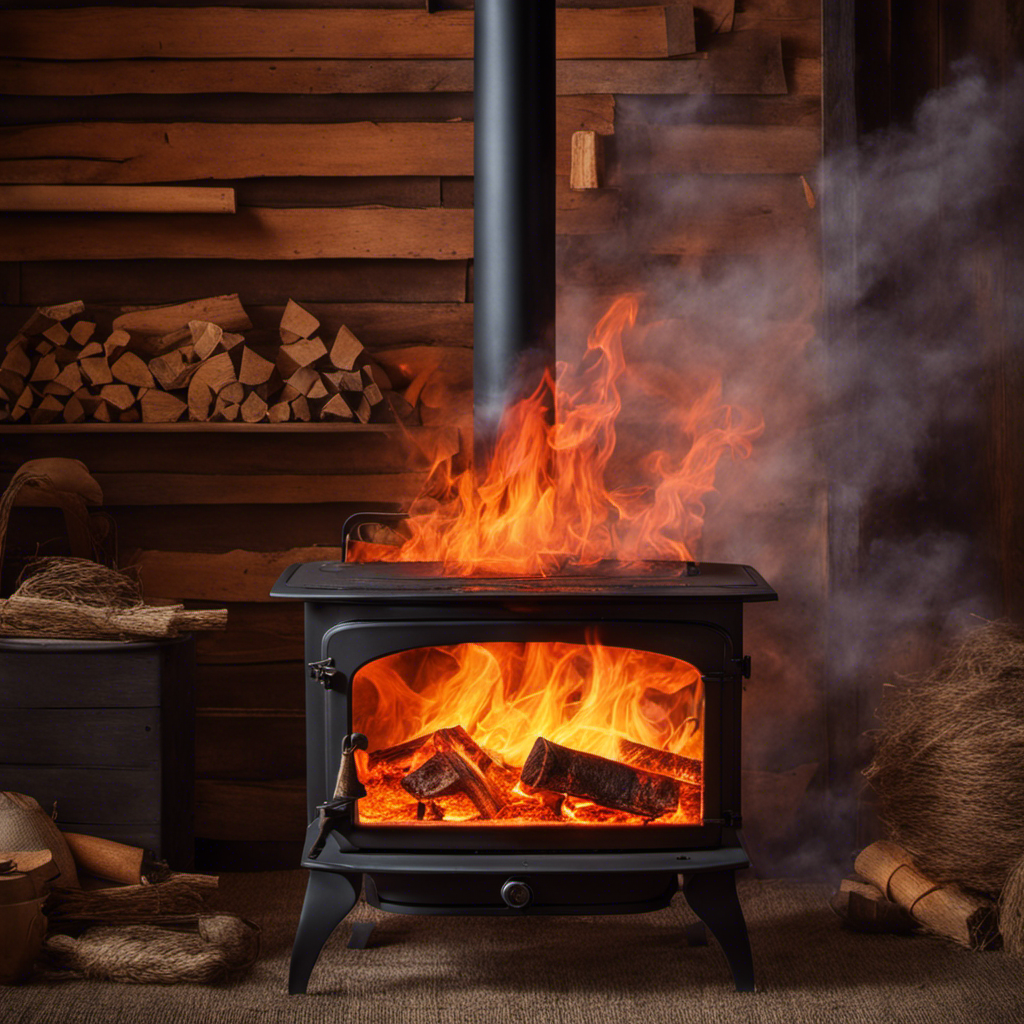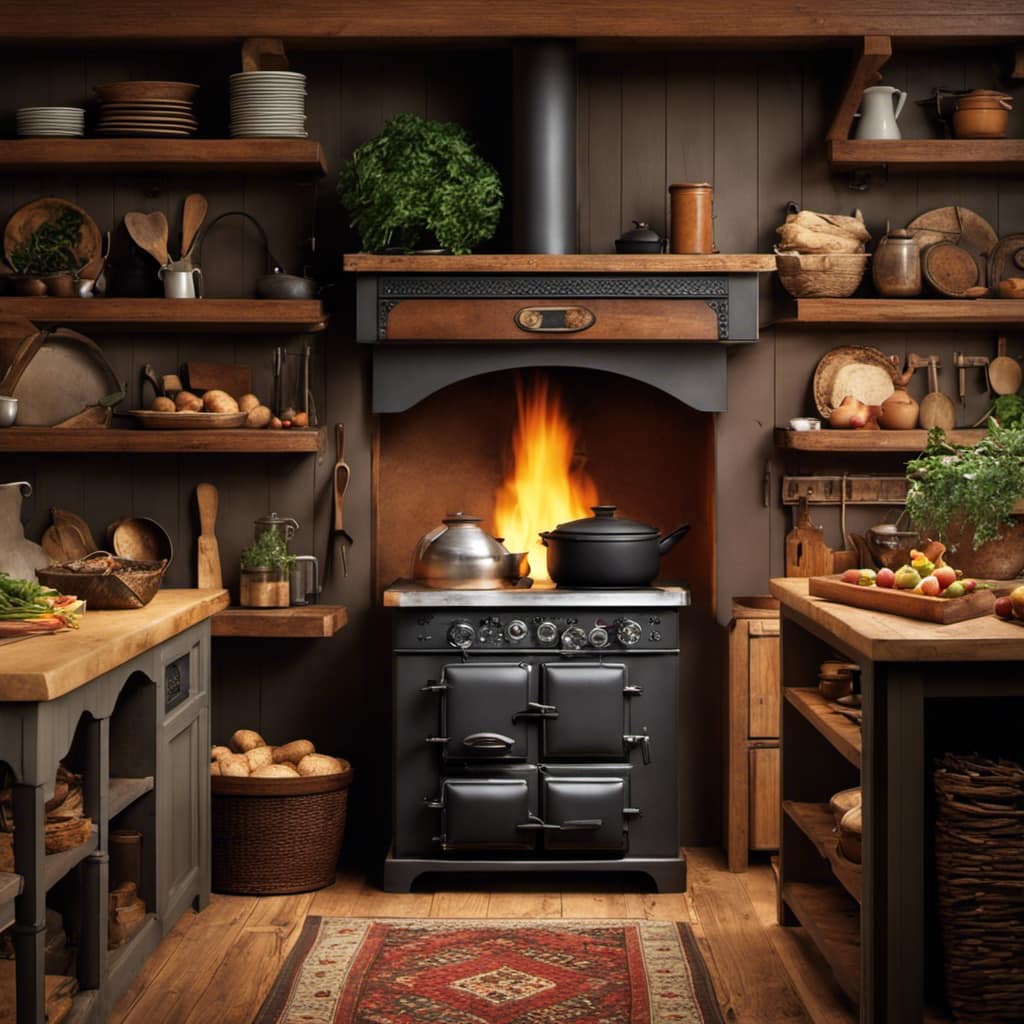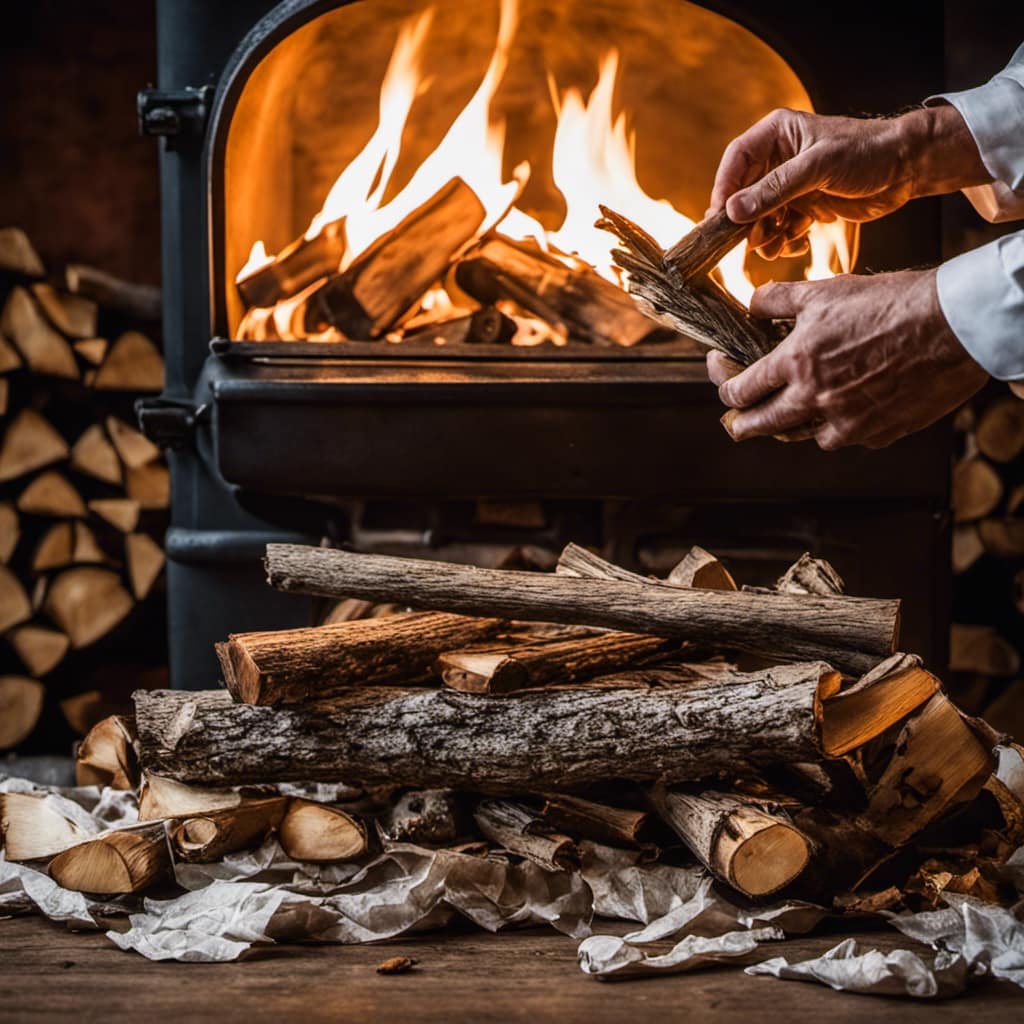As a regular user of wood stoves, I am continually amazed at the substantial heat output that these simple units can generate. It’s remarkable how a mere stack of wood logs can reach temperatures comparable to that of a blazing inferno.
In this article, we’ll delve into the factors that influence wood stove temperature, explore the heat output of different models, and discover tips for controlling and optimizing heat.
So, let’s stoke the fire and uncover the scorching secrets of wood stove heat.
Key Takeaways
- The size and quality of wood, especially hardwoods like oak and maple, greatly influence the temperature output of a wood stove.
- The moisture content of wood is crucial for optimal performance, and well-seasoned, dry hardwood should be used for maximum heat production.
- Different types of wood have varying heat values, with oak and maple burning longer and producing more heat than pine and spruce.
- The material and design of the wood stove, particularly the combustion system, play a significant role in determining its maximum temperature range. Regular maintenance is necessary to prevent creosote buildup and maintain optimal temperature capabilities.
Factors Influencing Wood Stove Temperature
The size and quality of the wood I use directly affect the temperature of my wood stove. Wood stove efficiency is determined by how effectively it burns the wood and transfers the heat into the room.
When it comes to wood quality, hardwoods such as oak or maple are preferred over softwoods like pine or spruce. Hardwoods burn slower and produce more heat, resulting in a higher temperature output.
Additionally, the moisture content of the wood plays a significant role. Wet or green wood contains more water, which needs to be evaporated before the wood can burn and release heat. This reduces the overall efficiency of the wood stove and lowers the temperature.
Therefore, it’s crucial to use well-seasoned, dry hardwood for optimal wood stove performance. Understanding the impact of wood quality and moisture content on the temperature output of a wood stove is essential for maximizing efficiency and heat production.
Understanding the Heat Output of Wood Stoves
I can feel the warmth radiating from the firebox of my wood stove. As a wood stove enthusiast, I understand the importance of selecting the right firewood to maximize efficiency and improve heat output. The type of wood you choose can greatly impact the performance of your wood stove. Hardwoods, such as oak and maple, burn longer and produce more heat compared to softwoods like pine and spruce. To help you make an informed decision, here is a table outlining the heat value and characteristics of popular firewood choices:
| Firewood Type | Heat Value (BTUs/cord) | Characteristics |
|---|---|---|
| Oak | 24-28 million | Long-burning, slow release of heat |
| Maple | 21-24 million | Steady heat output, good coaling ability |
| Pine | 15-19 million | Quick-burning, ideal for starting fires |
| Spruce | 14-17 million | Good for kindling, but burns quickly |
Maximum Temperature Ranges of Different Wood Stove Models
As an enthusiast, I’ve found that different models of wood stoves have varying maximum temperature ranges. It’s important to understand these ranges for both safety and efficiency purposes.
Here are three key factors to consider when it comes to the maximum temperature range of wood stoves:
-
Material: The material used in the construction of the stove plays a significant role in determining its maximum temperature range. Cast iron stoves, for example, tend to have higher maximum temperatures compared to steel or soapstone stoves.
-
Design: The design of the stove, particularly the combustion system, can affect its maximum temperature range. Stoves with advanced secondary combustion systems often achieve higher temperatures by efficiently burning the wood and maximizing heat output.
-
Maintenance: Proper wood stove maintenance is crucial for maintaining safe and effective operation. Regular cleaning of the stovepipe, chimney, and firebox helps prevent creosote buildup, which can reduce the stove’s maximum temperature capabilities.
Using a wood stove offers several benefits, including cost savings, reduced carbon emissions, and a cozy atmosphere. Understanding the maximum temperature range of your wood stove will ensure safe and efficient operation while enjoying the warmth and comfort it provides.
Tips for Controlling and Optimizing Wood Stove Heat
To control and optimize heat, it’s important to adjust the airflow and use the damper effectively. By controlling airflow, you can regulate the amount of oxygen that reaches the fire, which directly affects the heat output. To reduce heat loss, make sure the damper is closed when the stove is not in use. This prevents warm air from escaping through the chimney. Additionally, you can use a baffle or heat exchanger to extract more heat from the stove before it is released into the room. Here is a table illustrating different methods for controlling airflow and reducing heat loss:
| Method | Description | Effectiveness |
|---|---|---|
| Adjusting air vents | Regulates oxygen supply to the fire | High |
| Closing damper | Prevents heat loss through the chimney | Medium |
| Using baffle or heat exchanger | Extracts more heat before it escapes | High |
These techniques will help you have better control over the heat output of your wood stove while minimizing heat loss.
Safety Precautions for Handling High Temperatures in Wood Stoves
When handling high temperatures, it’s crucial to wear heat-resistant gloves to protect against burns. As someone who’s worked with wood stoves for years, I understand the importance of safety precautions.
Here are a few fire prevention measures to keep in mind:
- Maintain a safe distance: Always keep a safe distance from the wood stove to prevent accidental contact with hot surfaces.
- Use protective barriers: Install heat-resistant barriers around the stove to prevent accidental contact and to create a buffer zone.
- Proper ventilation: Ensure that your wood stove is properly ventilated to prevent smoke buildup and potential fire hazards.
Frequently Asked Questions
How Hot Can a Wood Stove Get?
A wood stove can get extremely hot, reaching temperatures of up to 1000 degrees Fahrenheit. It is crucial to understand how to properly maintain and safely handle a wood stove to avoid accidents and ensure its efficient operation.
What Are the Different Types of Wood Stoves Available in the Market?
Well, there are various types of wood stoves available in the market. Wood stove designs range from traditional to modern, each with its own efficiency levels. It’s fascinating to see how technology has improved wood stove efficiency over the years.
Can a Wood Stove Be Used for Cooking?
Yes, a wood stove can be used for cooking. It offers the benefits of natural heat and the ability to control cooking temperatures. However, it is essential to follow wood stove safety guidelines to prevent accidents.
How Long Does It Take for a Wood Stove to Cool Down After Use?
After use, a wood stove takes a few hours to cool down completely. To properly clean and maintain it, wait until it’s cool enough to touch, then remove ashes and clean the interior. The benefits of using a wood stove for heating your home are cost-effectiveness and a cozy ambiance.
Are There Any Regulations or Guidelines for Installing a Wood Stove?
Regulations and installation guidelines for wood stoves vary depending on your location. It’s important to consult local building codes and follow manufacturer instructions to ensure safe and proper installation.
Conclusion
In conclusion, wood stoves can reach temperatures as high as 1,000 degrees Fahrenheit, depending on factors such as the type of wood, stove design, and air circulation.
This impressive statistic highlights the powerful heat output that wood stoves can provide, making them an efficient and reliable heating option for many households.
By understanding the factors that influence wood stove temperature and following safety precautions, homeowners can optimize their wood stove’s performance while ensuring a safe and cozy environment.
Logan’s affair with adventure began in childhood. He hailed from a small town where vast forests bordered one side and endless shores stretched on the other. His days were spent exploring uncharted woods, climbing tall trees, or listening to the tales of old sailors. This early immersion in a world brimming with stories and mysteries became the foundation of his passion for writing.











